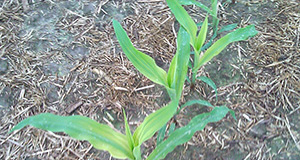Abstract
Intended for Extension clients, this publication highlights the importance of sulfur in row and vegetable crop production systems in Florida, such as its use in pesticides and fertilizers. Additionally, the publication provides insights into the perspective of the Environmental Protection Agency (EPA) on sulfur in naturally occurring aquatic systems. This publication's target audience is agricultural producers, Extension agents, crop consultants, representatives of the fertilizer industry, state and local agencies, students, instructors, researchers, and interested Florida citizens.
References
Aulakh, M. S., and N. S. Pasricha. 1977. “Interaction Effect of Sulfur and Phosphorus on Growth and Nutrient Content of Moong (Phaseolus aureus L.).” Plant Soil 47: 341–350. https://doi.org/10.1007/BF00011493.
Chaudhary, S., R. Dhanker, K. Singh, B. Brar, and S. Goyal. 2022. “Characterization of Sulfur-Oxidizing Bacteria Isolated from Mustard (Brassica juncea L.) Rhizosphere having the Capability of Improving Sulfur and Nitrogen Uptake.” Journal of Applied Microbiology 133 (5): 2814–2825. https://doi.org/10.1111/jam.15742.
De Kok, L. J., A. Castro, A. Koralewska, M. Durenkamp, F. S. Posthumus, C. E. E. Stuiver, L. Yang, and I. Stulen. 2005. “Pathways of Plant Sulfur Uptake and Metabolism: an Overview.” Landbauforschung Volkenrode 283: 5–13.
Divito, G. A., H. E. Echeverría, F. H. Andrade, and V. O. Sadras. 2015. “Diagnosis of S Deficiency in Soybean Crops: Performance of S and N:S Determination in Leaf, Shoot and Seed.” Field Crop Research 180 (2015): 167–175. https://doi.org/10.1016/j.fcr.2015.06.006.
Hinckley, E.S. Midwest U.S. Fertilizer Data, 1985–2015. V1. November 23, 2022. Distributed by Environmental Data Initiative. https://doi.org/10.6073/pasta/2868799978abc180ff22ebc8da880248.
Interim Registration Review Decision for Sulfur (IRRDS) (2015); U.S. Environmental Protection Agency, Office of Pesticide Programs, Pesticide Re-evaluation Division, U.S. Government Printing Office: Washington, DC.
Klikocka, H., M. Cybulska, and A. Nowak. 2017. “Efficiency of Fertilization and Utilization of Nitrogen and Sulphur by Spring Wheat.” Polish Journal of Environmental Studies 26 (5): 2029–2036. https://doi.org/10.15244/pjoes/69942.
Liu, G. D., E. H. Simonne, K. T. Morgan, and G. J. Hochmuth. 2015. “Soil and Fertilizer Management for Vegetable Production in Florida.” University of Florida, IFAS Extension, HS711. https://edis.ifas.ufl.edu/publication/CV101.
National Atmospheric Deposition Program. 2018. “Site NTN AB32: Build a Report.” Data from 1985 to 2018. http://nadp.slh.wisc.edu/NTN.
NPIC Product Research Online (NPRO) (2017): Sulfur; National Pesticide Information Center: Corvallis, OR.
Preliminary Environmental Fate and Ecological Risk Assessment (PEFERA) for the Registration Review of Sulfur (2013a); U. S. Environmental Protection Agency, Office of Pesticide Programs, Environmental Fate and Effects Division, U.S. Government Printing Office: Washington, DC.
Saha, B., S. Saha, P. D. Roy, D. Padhan, S. Pati, and G. C. Hazra. 2018. “Microbial Transformation of Sulfur: An Approach to Combat the Sulfur Deficiencies in Agricultural Soils.” In Role of Rhizospheric Microbes in Soil, edited by V. S. Meena. Singapore: Springer Nature. https://doi.org/10.1007/978-981-13-0044-8_3.
Stewart, B. A., and L. K. Porter. 1969. “Nitrogen-Sulfur Relationships in Wheat (Triticum aestivum L.), Corn (Zea mays), and Beans (Phaseolus vulgaris).” Agronomy Journal 61 (2): 267–271. https://doi.org/10.2134/agronj1969.00021962006100020027x.
Summary of Human Health Risk Assessments (SHHRA) to Support Registration Review (2013b); U. S. Environmental Protection Agency, Office of Pesticide Programs, Health Effects Division, U.S. Government Printing Office: Washington, DC.
Turner, J. A. 2017. The Pesticide Manual: a World Compendium. 17th ed. Hampshire: British Crop Protection Council. 1048–1049.
Vidyalakshmi, R., R. Paranthaman, and R. Bhakyaraj. 2009. “Sulfur Oxidizing Bacteria and Pulse Nutrition–a Review.” World Journal of Agricultural Sciences 5 (3): 270–278.
Williams, J. S., and R. M. Cooper. 2004. “The Oldest Fungicide and Newest Phytoalexin–a Reappraisal of the Fungitoxicity of Elemental Sulphur.” Plant Patholology 53 (3): 263–279. https://doi.org/10.1111/j.0032-0862.2004.01010.x.
Zhao, F.J., M. T. Hawkesford, and S. P. McGrath. 1999. “Sulfur Assimilation and Effects on Yield and Quality of Wheat.” Journal of Cereal Science 30: 1–17. https://doi.org/10.1006/jcrs.1998.0241.
Zhao, F. J., M. Tasuz, L. J. De Kok. 2008. “Role of Sulphur for Plant Production in Agricultural and Natural Ecosystems.” In Sulphur metabolism in Phototrophic Organisms, edited by Rüdiger et al., 425–443. http://dx.doi.org/10.1007/978-1-4020-6863-8_21.

